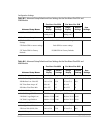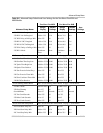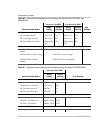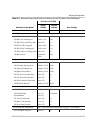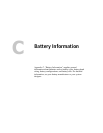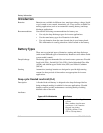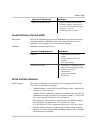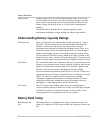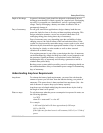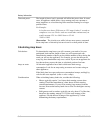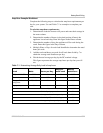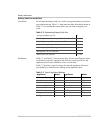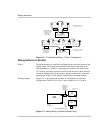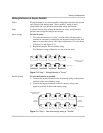
Battery Information
C–4 976-0043-01-02
Other options Another option for 24 volt (only) alkaline battery banks is to use only
19 cells instead of 20. Fewer cells allow the battery charger to operate
more closely to the settings used for lead-acid batteries. However, the
battery voltage will drop to as low as 18 volts when discharging the
batteries.
Consult the battery manufacturer or supplier regarding system
requirements and battery charger settings for alkaline type batteries.
Understanding Battery Capacity Ratings
Discharge rate Deep cycle batteries have their amp-hour rating expressed as “at the x-
hour rate”. The hour rating refers to the time it takes to discharge the
batteries. A faster hour rate (6 hour rate) means more current is
withdrawn from the batteries during their discharge period. There is an
inevitable amount of heat associated with the flow of current through a
battery and the higher amount of current the greater the amount of heat
will be generated. The heat is energy which is no longer available to the
battery to power loads. a relatively long discharge rate (72 hour rate) will
result in a larger number of amp-hours being available for electrical loads.
Calculation This calculation shows how to determine the level of current drawn from
a battery at any given hour rate—battery capacity divided by the hour rate
equals the current drawn from the battery. For example, a battery rated
220 Ah at a 6 hour rate would be discharged at 36 amps (220/6).
For most residential applications of the Sine Wave Plus the 72 hour rate is
appropriate because on average a household uses low amounts of current
(lights, TV, radio for example) with occasional bursts or higher
consumption appliances like toasters or washing machines. For those
installations where high continuous electrical consumption rates are
anticipated it is more appropriate to use the 20 hour rate.
CCA rating The CCA rating (cold cranking amps) shown on starting batteries
expresses battery capacity in terms of its ability to provide large amounts
of current for intervals measured in minutes, not hours. This is why
starting batteries are not appropriate for inverter systems.
Battery Bank Sizing
Running time and
size
The battery bank’s size determines the length of time the inverter can
supply AC output power. The larger the bank, the longer the inverter can
run.



